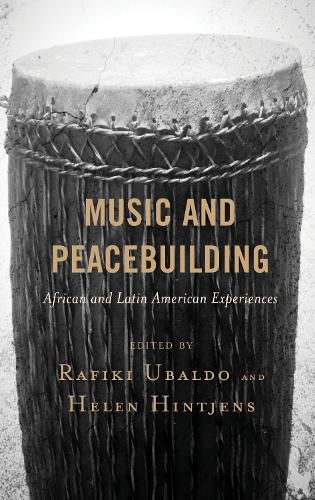Readings Newsletter
Become a Readings Member to make your shopping experience even easier.
Sign in or sign up for free!
You’re not far away from qualifying for FREE standard shipping within Australia
You’ve qualified for FREE standard shipping within Australia
The cart is loading…






There is growing interest among scholars and practitioners in how the arts can help rebuild post-conflict societies. This edited collection explores a range of musical practices for social and political peace. By presenting case studies in each chapter, the aim is to engage with musicality in relation to time, space, peace-building, healing, and reconciliation. Emerging scholars’ work on Latin America, especially Colombia, and on the African Great Lakes region, including Zimbabwe, Rwanda and Kenya, is brought together with the purpose of reflecting critically on ‘music for peace-building’ initiatives. Each author considers how legacies of violence are addressed and sometimes overcome; lyrics are examined as a source of insights. These practical music for peace-building initiatives include NGO work with youth hip-hop, music for peace, work in education on memory, as well as popular culture and shared rituals. Special attention is paid to historical and contextual settings, to the temporal and spatial dimension of musicality and to youth and gender in peace-building through music.
$9.00 standard shipping within Australia
FREE standard shipping within Australia for orders over $100.00
Express & International shipping calculated at checkout
There is growing interest among scholars and practitioners in how the arts can help rebuild post-conflict societies. This edited collection explores a range of musical practices for social and political peace. By presenting case studies in each chapter, the aim is to engage with musicality in relation to time, space, peace-building, healing, and reconciliation. Emerging scholars’ work on Latin America, especially Colombia, and on the African Great Lakes region, including Zimbabwe, Rwanda and Kenya, is brought together with the purpose of reflecting critically on ‘music for peace-building’ initiatives. Each author considers how legacies of violence are addressed and sometimes overcome; lyrics are examined as a source of insights. These practical music for peace-building initiatives include NGO work with youth hip-hop, music for peace, work in education on memory, as well as popular culture and shared rituals. Special attention is paid to historical and contextual settings, to the temporal and spatial dimension of musicality and to youth and gender in peace-building through music.